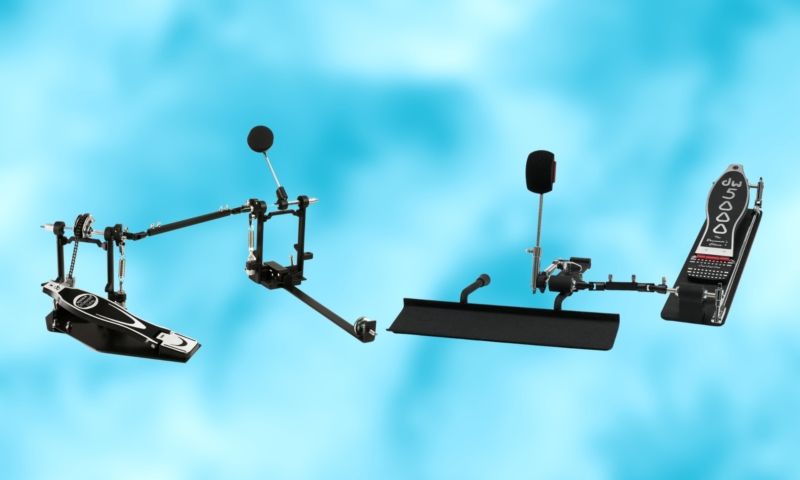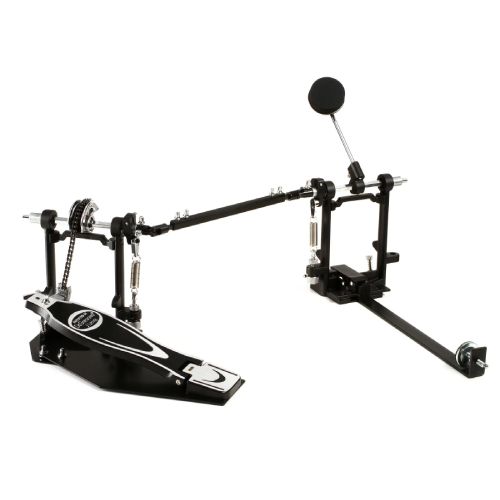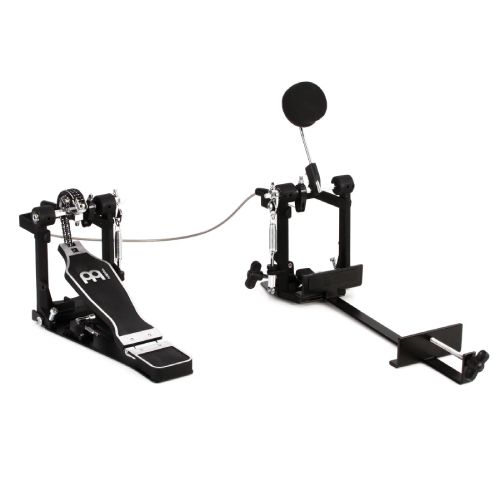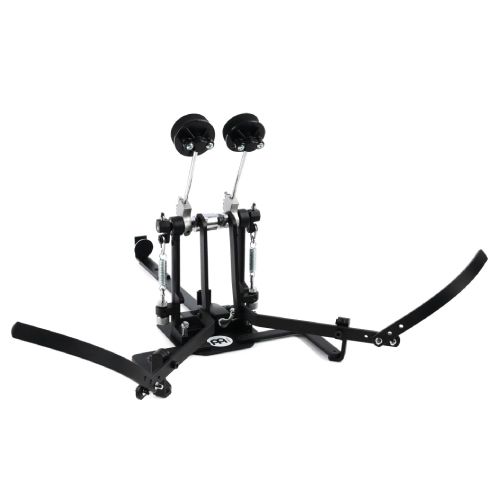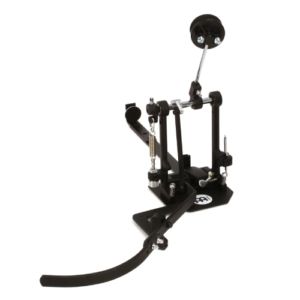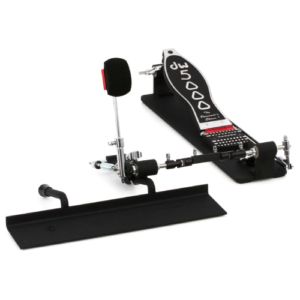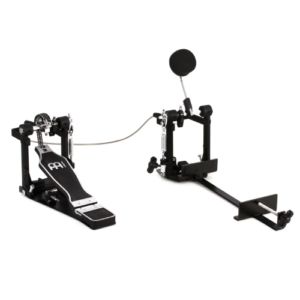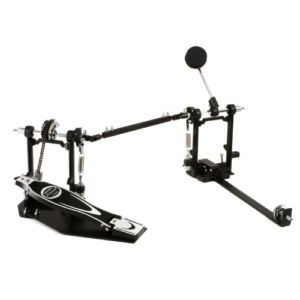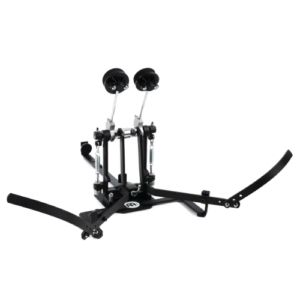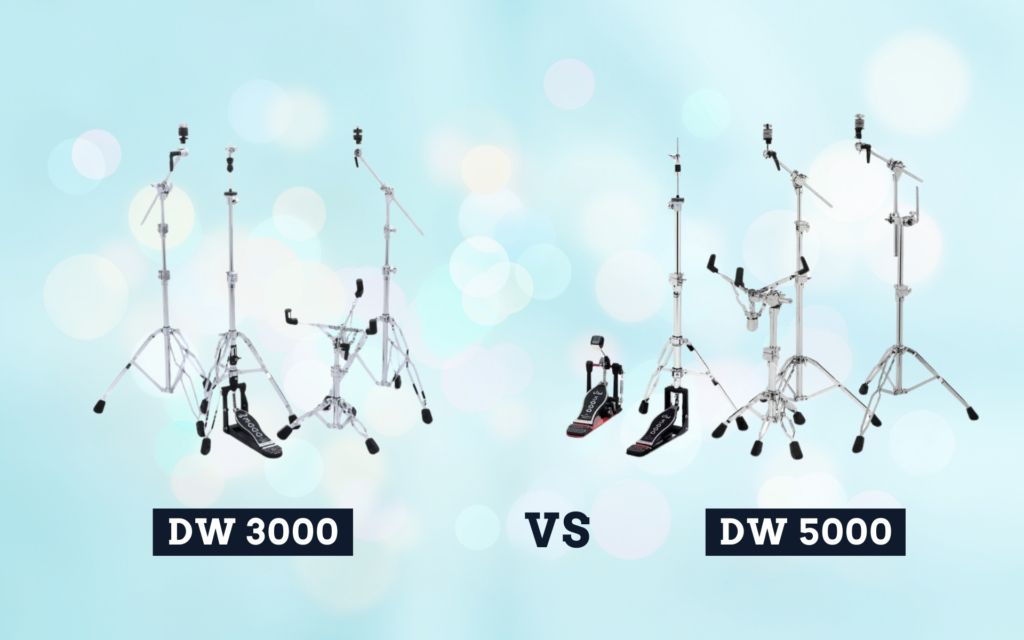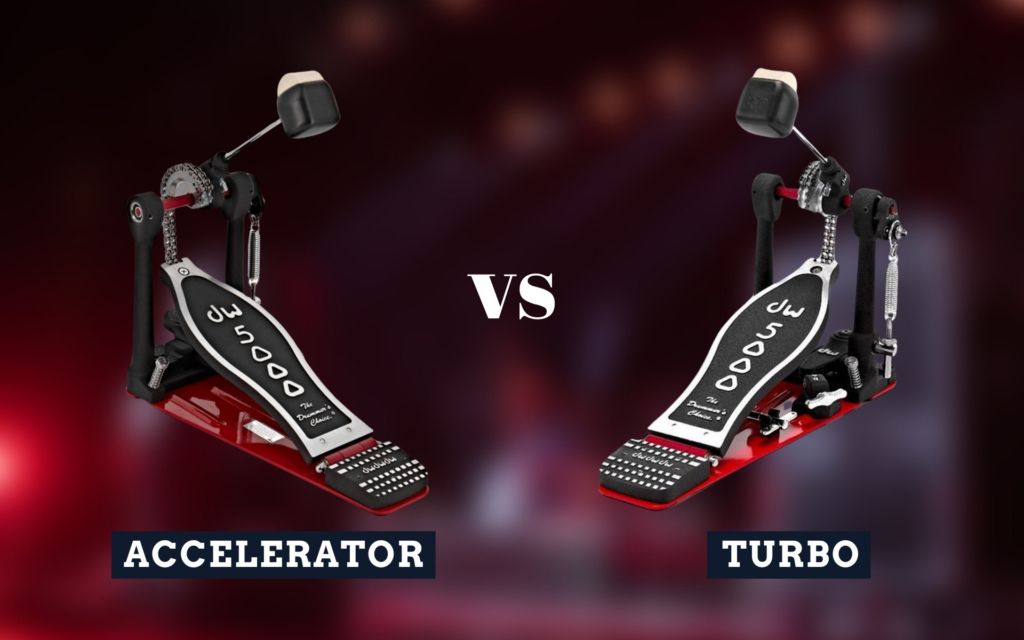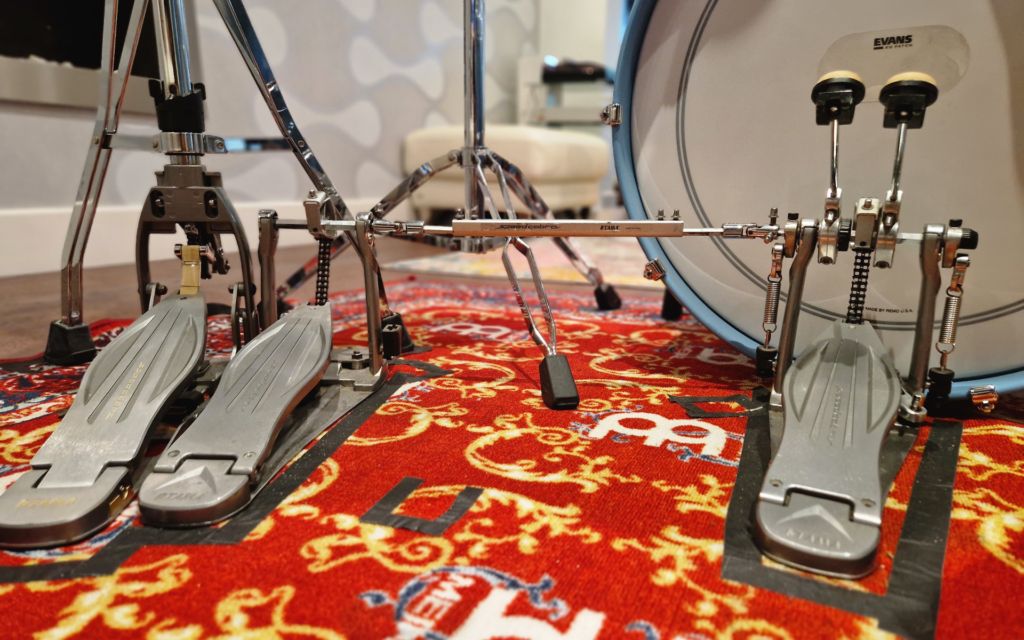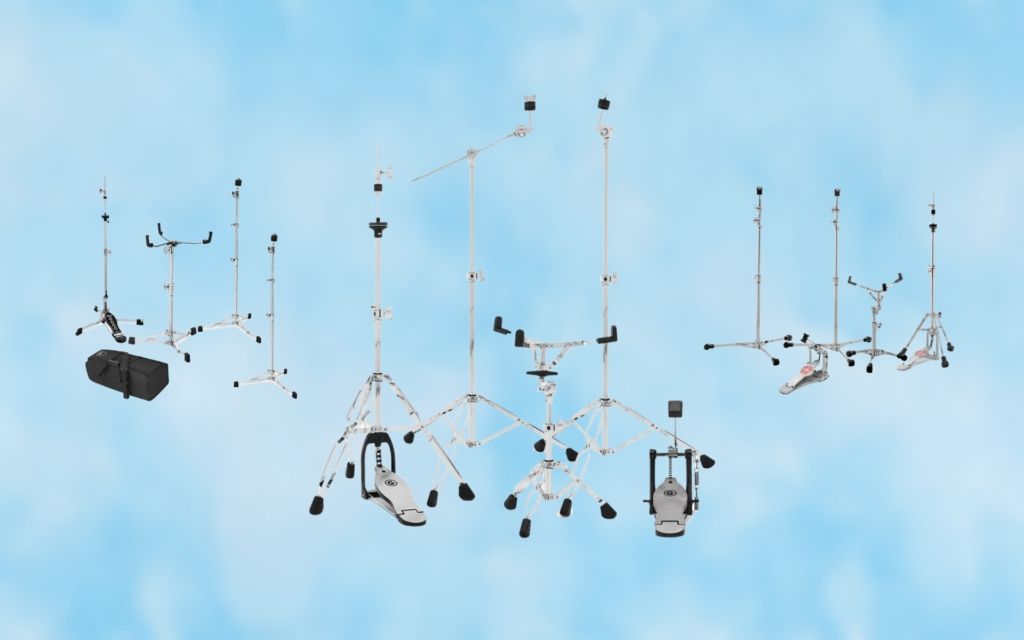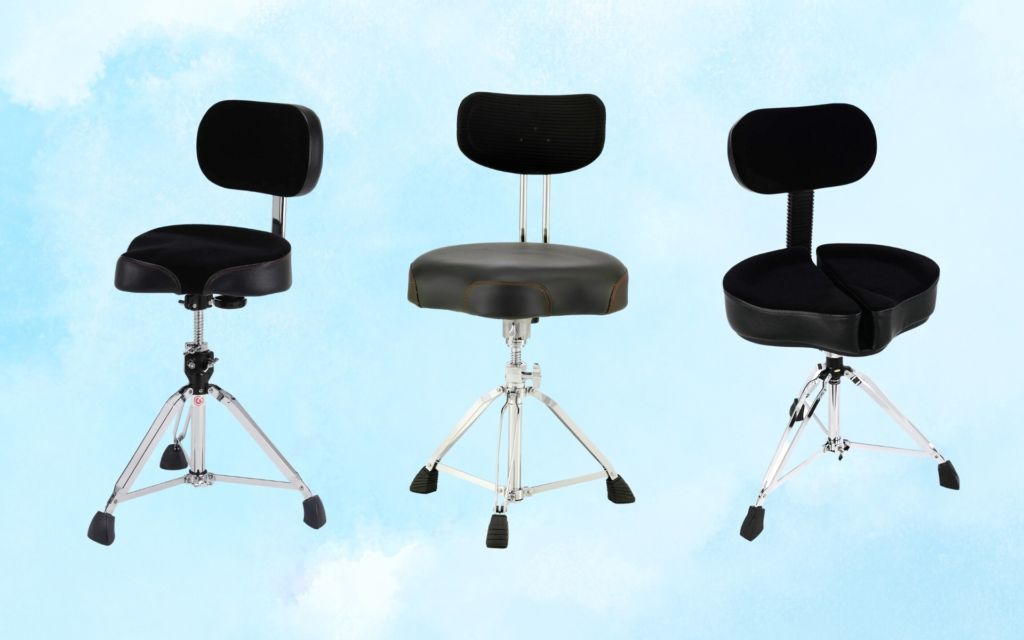I review products independently and only recommend products I would use myself. If you purchase through a link, I may earn an affiliate commission. Learn more.
If you’re a drummer who plays the cajon, you may feel a lot more comfortable with a dedicated cajon pedal.
The pedal essentially transforms the cajon into a kick drum, expanding your rhythmic possibilities, and allowing you to play a combination of hand and foot techniques.
It’s a valuable tool for adding depth and complexity to acoustic setups, especially in genres like flamenco, acoustic, and world music.
Using a cajon pedal is something everyone should try out, and this guide will show you some of the best cajon pedals on the market. I’ve picked them out and compared them according to durability, performance, cost, and features.
What are the Best Cajon Bass Drum Pedals?
How I Tested and Selected the Best Cajon Pedals
I own a cajon that I regularly use to play acoustic gigs. The pedal I had with it worked well, but I knew there were better options out there. So, I went in search of something superior for myself, and I used the testing process to compile this list.
When testing each Cajon pedal, I first looked at the overall design. There are a few unique designs to pick from, with all of them offering something unique in terms of performance and playability.
After that, I looked at adjustability. One size will never fit all, so the more adjustable a pedal is the more expansive it will be for different players. I find this incredibly important, as you should always use a pedal that feels comfortable.
Finally, I looked at the value. I wanted to find a few options at different prices so that I could recommend picks for various budgets. Some pedals have simple and affordable designs, while others have more intricate and pricier ones.
All the pedals I’ve chosen have a balanced combination of good value, great performance quality, and innovative design styles. They’re all great options to elevate your cajon drumming performances.
In-Depth Cajon Bass Drum Pedal Reviews
Meinl Percussion TMSTCP Direct Drive Cajon Foot Pedal
Meinl Percussion TMSTCP Direct Drive Cajon Foot Pedal Review
The Meinl Direct Drive Cajon Pedal is a popular option for cajon players. The most unique thing about it is the pedal pressing design, as it has a thin rod to place your foot on instead of a standard bass drum pedal.
This rod felt a bit weird to play at first, but I got used to it very quickly.
The direct drive design means that the pedal reacts instantly to your foot motions, and it made me feel as though the pedal always did exactly what I wanted without any delay.
The soft rounded beater brings out a very warm tone from the cajon, and it’s durable enough for moments when you want to play a bit harder.
This is an incredible pedal to consider, especially since it’s one of the most affordable options around. You get some cheaper ones, but they don’t have quality that is nearly as good as what you get here.
If you can’t get around the feeling of the foot rod compared to a standard pedal, then this Meinl cajon pedal may not be the choice for you.
Pros
- One of the most affordable high-quality cajon pedals
- Highly responsive
- More reliable than pedals with cables
Cons
- Metal rod doesn’t feel as good to play as a full pedal
DW DWCP5000CJDL Direct Linkage Cajon Drum Pedal
DW DWCP5000CJDL Direct Linkage Cajon Drum Pedal Review
This DW Direct Linkage pedal is the best option to get if you want the highest-quality pedal possible. It offers the same excellent response as the previous pedal, but you get a full footboard to play on that makes it feel a lot more comfortable.
Some of my favorite hardware designs come from DW, and I instantly felt at home when trying this pedal out.
It also comes with three separate linkage connections that allow you to choose how far away the pedal gets placed from the cajon. This gives you different playing options that you can choose according to how comfortable they feel to you.
The beater part connects to the Cajon with a heavy base metal piece. This makes the pedal feel even more secure when you play it. It also has a slightly offset design which DW claims boosts cajon performance a bit.
The carry bag that comes with the pedal is a huge bonus. Most other cajon pedals don’t come with one, so you need to transport them around somehow when playing gigs. The included carry bag here is just very convenient.
Overall, the DW Cajon pedal is your best pedal choice to consider. It’s just not a pedal that everyone can freely get due to its high price tag.
Pros
- Three linkage options offer various setup choices
- Extremely comfortable to play on
- Very durable
- Highly responsive
Cons
- A lot more expensive than other cajon pedals
Meinl Percussion TMCP Cajon Kick Pedal
Meinl Percussion TMCP Cajon Kick Pedal Review
Meinl’s TMCP cable pedal is another heavy-duty option to consider. Most cable-driven pedals are quite wonky in their design, but this one offers incredible stability with great playability as well.
The benefit of having a cabled connection from the pedal to the beater is that you can place the pedal anywhere around the cajon. This allows you to get the most comfortable positioning possible for the pedal.
When trying the pedal out, I moved the footboard around to see how responsive it was in different positions, and it worked great in all of them.
Another great aspect of this pedal is that the beater is slightly larger than the beaters that you get with other cajon pedals. It leads to a warmer tone coming from the Cajon when you play it with the beater.
The downside of the cable design is that there’s a very slight delay between pressing the pedal down and the beater hitting the cajon. It’s nothing serious, but it takes a bit of getting used to. If that’s a deal-breaker for you, then it’s better to get one of the direct-drive pedals that I mentioned above.
Pros
- The larger beater sounds excellent on a cajon
- Excellent adjustment settings
- Very robust for a cajon pedal with a cable
Cons
- Very slight delay between the pedal and the beater
DG De Gregorio DGP Remote Cajon Bass Pedal
DG De Gregorio DGP Remote Cajon Bass Pedal Review
While this pedal comes from a relatively unknown brand, it’s one of the most popular cajon pedals on the market. The standout feature is that you can place the pedal on either your left or right side, making it one of the most attractive options for left-footed players.
I tried the left-foot position out, and it seemed to work just as well as the standard right-foot one.
The DG De Gregorio DGP Remote Cajon Bass Pedal is also designed to be very durable and responsive, giving you an excellent playing experience. Even though the pedal is chain-driven, you get a similar response to what you’d get with any direct-drive pedal.
However, there’s only a single chain here, and this pedal would be even better if it had dual chains to control the response with.
The beater is made from foam rubber material which is unique to the brand. It brings out a lot of low-end from the cajon, which is perfect for the purpose of using a foot pedal for a cajon.
Pros
- Reversible placement design makes the pedal versatile for all players
- Solid construction quality
- The foam rubber beater feels great to play with
Cons
- Single chain design isn’t as responsive as dual chain designs from other pedals
Meinl Percussion TMDCP Direct Drive Double Bass Cajon Pedal
Meinl Percussion TMDCP Direct Drive Double Bass Cajon Pedal Review
This version of the Meinl Direct Drive pedal has the same design as the first one that I mentioned, but it has the added feature of a second pedal bar and beater to allow you to play double bass drum patterns on your cajon.
It has a symmetrical design, allowing you to sit square at the Cajon and distribute your weight to each pedal bar to feel comfortable.
While it’s not likely that a heavy metal drummer will be playing cajon at a coffee shop, this pedal will allow you to do that. It also allows you to play complex rhythms that a single pedal will prohibit you from doing.
I gave these pedals a good run when I played them. I had lots of fun playing herta foot patterns, and they remained stable even when I played quite hard.
As with the single pedal version, this Meinl Percussion TMDCP Direct Drive Double Bass Cajon Pedal is very affordable compared to the other heavy-duty options on the market.
Pros
- Allows you to play double bass patterns
- Relatively affordable compared to other cajon pedals
- Sturdily built
Cons
- Not everyone likes the pedal bar design
Cajon Pedal Buying Guide
Cajon pedals are unique pieces of gear that only work for cajons, so there are a few things to know about them when looking to buy one. If you’ve never used a cajon pedal before, it’s a good idea to learn about these things.
You can’t raise the height of a cajon, so you’re limited to the mechanics of the pedals to find the best comfortable settings, and that can make or break how a cajon pedal feels to play for you.
Benefits of Using a Cajon Pedal
- You can free up your hands to play more complex patterns while your foot plays all the base notes.
- It’s easier to play drum parts that you would play on a full drum set.
- Guitar players can use cajons with pedals to play bass drum notes to add a bit of rhythm to their sound.
- It’s a great option for venues where a standard bass drum will be too loud.
Features to Look Out for in a Cajon Pedal
Drive System
When choosing a cajon pedal, you’ll find a few different ways of the pedal being connected to the beater. The beater will be controlled by a type of drive system, and there are three main drive systems to find with cajon pedals.
The first drive type will be a direct drive. This is when the pedal has a direct connection to the beater through a metal rod. Direct-drive cajon pedals have the most accurate response according to how you play them. You’ll never get any delay between the pedal and the beater.
The next type is chain-driven pedals. These act the same way as chain-drive pedals for bass drums. You have one or two chains that interact with the pedal and control the beater as your foot presses up and down. These are also very responsive but not as responsive as direct drive mechanisms.
The final design you’ll find is pedals that are connected to the beater via a cable. The pedal sends a hydraulic signal through the cable, and the beater reacts accordingly.
Cable pedals are the least popular, as they typically have a slight delay between the pedal and the beater. Cables can also break over time. However, you get some amazing cable pedals that are worth considering. You can also get good replacement cables from brands like DW and Latin Percussion.
Pedal
Most cajon pedal boards are designed the same way as bass drum and hi-hat pedals. You get a pedal large enough for your foot that is connected with rods and a drive system.
However, a few cajon pedals, such as the direct-drive options from Meinl, have a thin pedal bar that controls the beater. These feel a bit different to play compared to standard pedals, but they tend to work very well.
Some pedals feel much sturdier than others. For example, the DW 5000 pedal is one of the best ones to consider if you’re looking for heavy stability, while the footboard from an inexpensive cajon pedal will most likely feel very flimsy.
Beater
Most cajon pedals will come with soft felt or rubber beaters. Some are larger than others, with the larger ones producing rounder sounds from the cajon.
If you love the pedal design but not the beater, you can always purchase a beater separately. All the brands that I mentioned above sell individual beaters for cajon pedals.
It’s important to stick to soft rubber and felt beaters, as anything harder will damage a cajon very quickly.
Adjustment Options
Every cajon pedal has various adjustment options. Some of them allow you to alter the height of the footboard, while others have different linkages to change how far the footboard is positioned. Most pedals also have adjustable spring tension.
Not everyone will be comfortable with the same cajon pedal setup, so it’s important to see what adjustment options are offered with every pedal.
While cable pedals are the least reliable, they’re undoubtedly the easiest ones to position comfortably. If you don’t want a cable pedal, you should find a pedal with versatile adjustment options to suit your setup preferences.
Cajon Pedal FAQs
Can You Use a Standard Bass Drum Pedal on a Cajon?
No, you can’t use real bass drum pedals for cajons, as cajons don’t have a rim for standard pedals to clip on. Even if you’re just using the cajon as a bass drum, you’ll need a dedicated cajon pedal to be able to play it comfortably with your foot.
Unfortunately, you can’t use a cajon pedal on a bass drum, either. Both pedals have very different attachment designs.
Is Playing with a Cajon Pedal Hard?
It takes a bit of getting used to at first, especially considering that you can’t change the height of a cajon. Most people play with their heels down when playing a cajon pedal. That may come as an adjustment for drummers who prefer to play with their heels up for the kick drum pedal on a drum kit.

